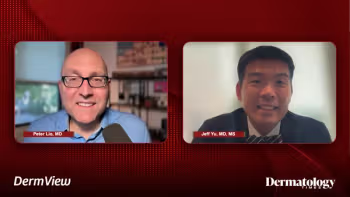
Fractional resurfacing: Lasers have a wide array of applications
Many new techniques are being used to reshape the body. Fractional lasers require much less downtime than other lasers, and electromagnetic radiation has presented a new direction for treating varicose veins, making stripping and ligation a less popular treatment option.
Key Points
"One of the leading technologies is fractional resurfacing," says Jeffrey Dover, M.D., delivering a keynote address on new developments in lasers, lights and energy sources, at the annual meeting of the Canadian Dermatology Association.
"With these technologies, you leave behind normal tissue to bridge healing in three to seven days instead of 14 days. Patients heal much more quickly."
Lasers have an array of applications including treating acne, skin rejuvenation, fat melting, elimination of vascular lesions and body contouring, according to Dr. Dover, who is also an adjunct professor in the department of medicine/division of dermatology at Dartmouth Medical School in Hanover, New Hampshire.
Newer vascular lasers can now avoid purpura on the skin, as they deliver the energy more slowly and cause a collapse of the vessels without rupturing them, eliminating the cause of purpura, he says.
Electromagnetic radiation has taken the treatment of varicose veins in a completely different direction, Dr. Dover says. Fiber-delivered lasers and radiofrequency are used with ultrasound guidance to treat varicose veins.
"These devices have revolutionized how we treat various veins," Dr. Dover says. "You get good results with treating painful varicose veins. Stripping and ligation is becoming a thing of the past."
Lasers and acne
Lasers and light sources also have been used to treat acne, but they have not become a mainstay in acne treatment because acne clearance is short-lived. Consequently, it makes more sense, taking into account factors such as cost, to use traditional agents to treat acne as the first line of treatment rather than use costly lasers and light sources.
"Laser light is not the best option for acne," says Dr. Dover. "We might as well use less expensive and effective traditional therapies."
Photodynamic therapy (PDT), which combines light and light-sensitive agents, such as porphyrins, can produce dramatic improvements with a condition such as acne, but the optimal drug/light dose combination has not yet been determined. "We don't know what is the right light and drug combination," Dr. Dover says. "Until we do, PDT treatment of acne is not really ready for prime time."
Skin tightening involves modifying the dermis while protecting the epidermis. Some forms of thermal energy can be used to damage the dermis while ensuring the epidermis is protected, according to Dr. Dover.
Results
The results of nonsurgical methods of facial skin tightening when applied to the face do make an improvement, but the change is not as dramatic as surgical skin tightening, Dr. Dover says.
"The improvements are modest," he adds.
"The majority of patients see what they think is a reasonable improvement. The key is that they have to be informed in advance what to expect from treatment, so that they will not be disappointed.
"You have to pick your patients correctly. Nonsurgical techniques work well for patients who don't want a facelift and have mild-to-modest facial sagging," Dr. Dover explains.
Many new techniques have emerged to reshape the body, such as infrared light, focused ultrasound, cold and mesotherapy.
"These all work, but with more study, the most effective treatments will be determined," Dr. Dover says. "There will be a shake out in the future as we figure out which of these technologies work best."
At-home use
One of the trends in lasers in dermatology is the development of handheld lasers and light sources for home use, with applications such as hair removal and skin rejuvenation, which Dr. Dover sees as a burgeoning area.
Newsletter
Like what you’re reading? Subscribe to Dermatology Times for weekly updates on therapies, innovations, and real-world practice tips.


















